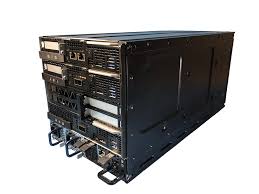
If real-time data means data being transmitted at millisecond speeds, are businesses ready to do something with it?
Real-time information is the ultimate state of data analytics, and the ability to quickly respond to market changes and customer requests. The technology to provide real-time data feeds is readily available, but how many companies are ready to jump on the real-time data they are receiving? It depends on what the business is ready to do.
That’s the word from Marc Concannon, CTO of Clavis Insight, who says while it is important for organizations to be operating and making decisions based on real-time data, business and technology leaders need to think through what real-time really means to their businesses. But business leaders need to determine what constitutes real-time and where it is needed. I recently caught up with Concannon, who asks the question: “What does real time mean?’
What does real-time really mean
If real-time data means data being transmitted at millisecond speeds, can the business really do something with it?
[ Related: Analytic Algorithms May Deliver Bad Data at Real-Time Speeds ]
“No change in a state can ever be notified to a subscriber instantaneously — unless we are talking quantum state – but that’s a whole other story — so there is always a time lag between an event happening and the notification of that change,” Concannon said. “The real question is what is the quickest a change in state of ‘A’ can result in a decision and action by a business or process. It depends on the business in question and how quickly they can react to changes.”
Concannon cites an example of how different lines of business may view this requirement: “An automatic micro trading service wants to react and act in milliseconds to a change in a stock or market, but batch manufacturer of widgets may only be able to react in hours or possibly days to a new order or change.”
So, are most companies ready for millisecond data delivery? “When you get down to it, it’s how fast can a company react and if the company utilizes tools to make information available to them quicker will that actually drive any change in profitability?” Concannon asks.
“For the micro trading companies, the sooner they have the data the quicker they can react and hence the chances of higher profit are huge. But for a widget maker having orders in front of them within milliseconds, versus minutes, or even hours might not have any real impact on their bottom line,” Concannon said.
Working towards real-time data is good
Ultimately, though, it’s all good, he continues. “When you decrease the time to takes to get information to a decision maker, you can make better decisions, which usually results in better bottom line. As organizations evolve and technology and systems make the data available quicker and quicker the rest of the organization starts to speed up and their ways of working also evolve to take advantage, this usually results in a decrease in waste and poorly utilized time which means more money.”
[ Related: The Rise of Real-Time Data: Prepare for Exponential Growth ]
Use cases of organizations benefiting from real-time information abound, and many are presented here at RTInsights. Scott Golden, managing director in the data management and advanced analytics group at Protiviti, offers some perspective on the many ways real-time data is being put to use by.
“We have customers using real-time data to track their supply chains and avoid costly missed shipments,” Golden said. “We have customers using real-time data to adjust price/volume mix to keep optimal revenue numbers. We have customers using real-time data to track purchase amounts at quarters end to maximize vendor rebates. Not all situations require real-time data, and in many cases real-time data can be more confusing than helpful. But for the right use cases, real-time can be a game changer on how you run your organization.”







